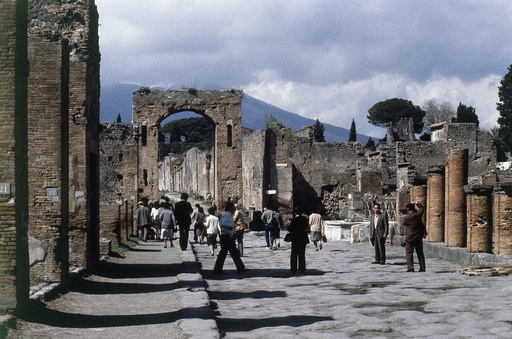
When the catastrophic eruption of Mount Vesuvius engulfed the city of Pompeii, the final moments of its inhabitants were entombed in rock, allowing their last struggles to be preserved for centuries. Many observers have interpreted the plaster casts created from the victims’ bodies, depicting heart-wrenching scenes like a mother clutching her child or two individuals locked in a fatal embrace.
However, recent DNA findings are challenging these long-held perceptions, revealing that these interpretations might stem from contemporary viewpoints rather than ancient realities. “Our research allows us to question and sometimes overturn the previously accepted narratives concerning the relationships among these individuals,” explained Alissa Mittnik from the Max Planck Institute for Evolutionary Anthropology in Germany. “This provides us with new insights into the identities of these people.”
Mittnik and her team determined that the individual believed to be a mother was, in fact, a man with no familial link to the child. Additionally, they found that at least one of the two individuals thought to be a pair of sisters or a mother and daughter was also male. The findings were shared in a recent publication in the journal Current Biology.
Collaborating with scientists from Harvard University and the University of Florence, the researchers utilized genetic material preserved for nearly 2,000 years. After the 79 A.D. eruption, the bodies buried under layers of volcanic debris decomposed, leaving voids in the ash that were later filled with plaster to create casts in the late 19th century.
The research concentrated on 14 casts being restored, from which DNA was extracted to ascertain the sex, ancestry, and genetic connections of the individuals. The site known as “the house of the golden bracelet,” where the so-called mother and child were believed to be found, showed unexpected findings. The intricate jewelry that gave the house its name, suggesting a female occupant, was found on the adult body. Close by were what were presumed to be additional family members: another adult and a child.
However, DNA analysis revealed that all four individuals were male and unrelated, starkly contradicting the narrative that had previously surrounded these figures, according to Mittnik.
Furthermore, genetic evidence indicated that the residents of Pompeii had a diverse lineage, primarily tracing back to eastern Mediterranean immigrants, which highlights a pattern of cultural movement and exchange characteristic of the broader Roman Empire. Pompeii itself is situated approximately 150 miles (241 kilometers) from Rome.
This research builds upon a study from 2022 when scientists succeeded in sequencing the genome of a victim from Pompeii for the first time, affirming the potential to recover ancient DNA from extant human remains.
“They offer a comprehensive view of Pompeii by analyzing various samples,” commented Gabriele Scorrano from the University of Rome Tor Vergata, a collaborator on the earlier research but not part of the latest study. “In our previous research, we had only one genome, one sample to examine.”
Despite the many questions still to be answered, Scorrano noted that this progressive work in genetics is gradually unveiling a more accurate representation of the lives of people in antiquity.
